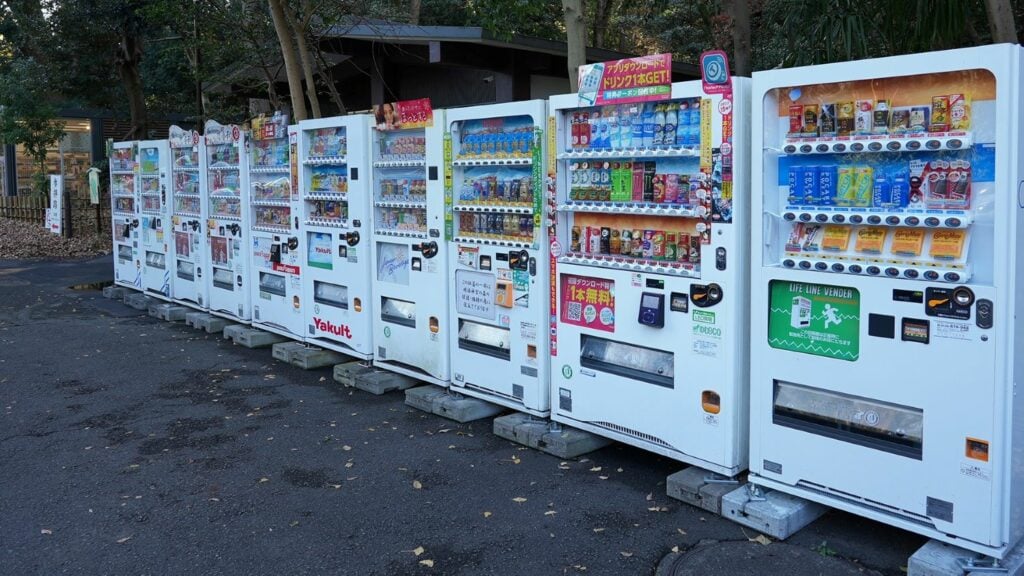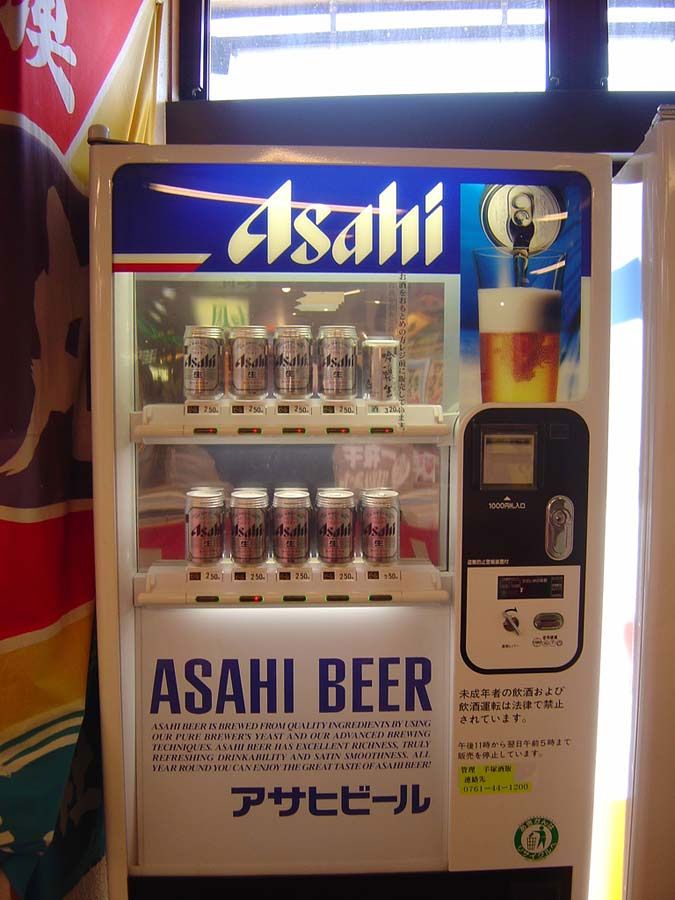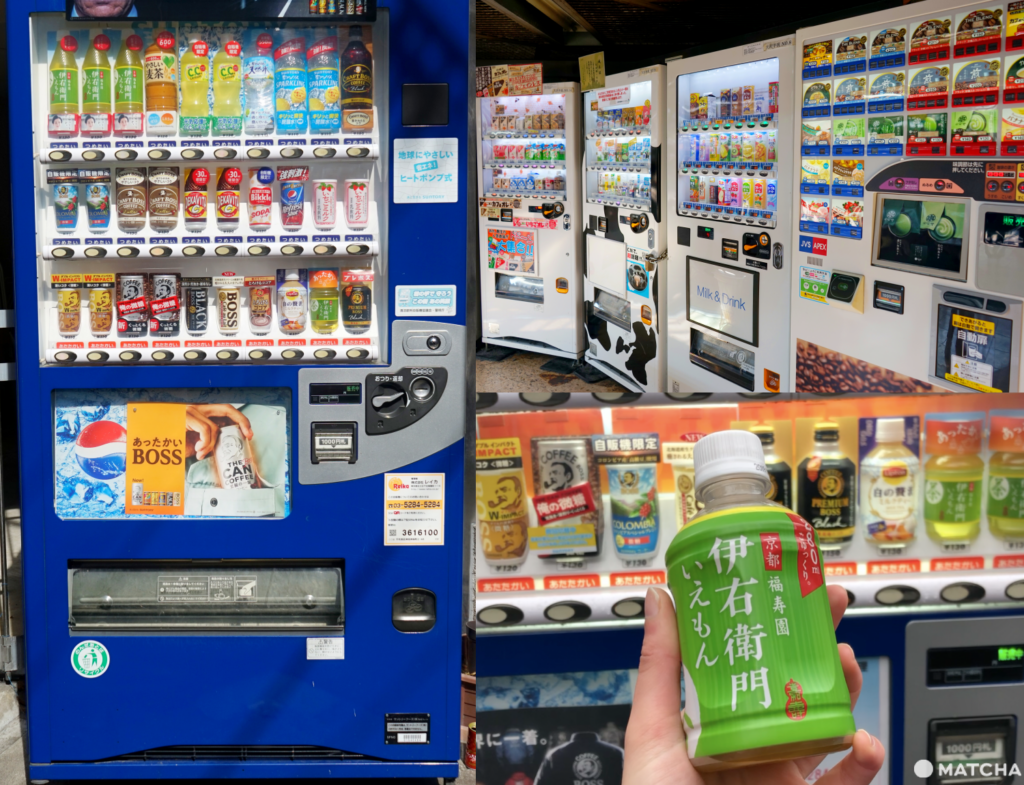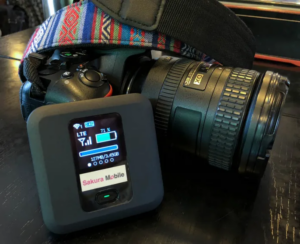You’ve probably seen vending machines. They’re everywhere, from school hallways to office break rooms. But if you think you’ve seen it all when it comes to vending machines, wait till you discover the intriguing universe of Japanese vending machines!
These aren’t your typical soda-and-snack dispensers. Oh no, Japanese vending machines, or “jidouhanbaiki” as they’re called locally, are a whole different ball game. They’re a perfect reflection of Japan’s culture, ingenuity, and love for convenience. From drinks to toys, and even beer, you’ll find a surprising array of items in these machines. But let’s not get ahead of ourselves. Let’s start at the beginning.
How Many Vending Machines are There in Japan?
Here’s a mind-blowing fact for you – there’s an estimated one vending machine for every 23 people in Japan. Yes, you read that right. That’s over five million machines across the country! It’s safe to say that Japan has embraced the vending machine culture like no other place on the planet.
A Peek into the Different Types of Vending Machines in Japan

Japan’s vending machines are as diverse as they come. Here’s a rundown of some of the types of vending machines you’ll encounter on your virtual tour.
Drink Machines
These are the most common types of vending machines in Japan. They’re not limited to just soda, though. You’ll find everything from coffee, tea, fruit juices, and even soup! And yes, as you may have guessed, Japanese beer vending machines are a thing too!
Food and Snack Machines
You’d be amazed at the assortment of food items available in Japanese vending machines. You can find everything from hot, ready-to-eat ramen to onigiri (rice balls), sandwiches, and even ice creams! Need a quick snack on-the-go? The vending machine’s got your back!
Toy and Gachapon Machines
For the young and the young-at-heart, toy vending machines, or Gachapon machines, are a delightful treat. These machines dispense capsule toys, and the thrill lies in the mystery – you never know what toy you’re going to get until you open the capsule!
Book and Manga Machines
Yes, you heard it right. There are vending machines in Japan that sell books and manga (Japanese comic books). These literary vending machines can be a savior when you’ve forgotten to bring your book on a long train journey.
Best-Selling Vending Machine Items in Japan
You’re probably wondering, “What are the best-selling vending machine items in Japan?” Well, it varies from place to place, but some items are universally popular.
Hot and cold canned coffee is a top seller, perfect for the busy commuter needing a quick caffeine fix. Soft drinks, especially unique Japanese flavors, are also incredibly popular. And you can’t forget about the beer vending machines, especially in the summer months!
In the non-drink category, capsule toys from Gachapon machines are a big hit. Whether it’s a cute animal figurine, a miniature version of a popular anime character, or a quirky keychain, the element of surprise makes these toys irresistible.
Now, let’s take a look at some of the best selling vending machine items in Japan. As you might have guessed, drinks top the list. Canned coffee is especially popular, providing a quick caffeine fix for those on the go.
- Snacks: Potato chips, popcorn, and other snacks are available, especially in areas frequented by tourists.
- Ice Cream: A seasonal dessert, vending machines offer various flavors of ice cream.
- Instant Noodles: You can find vending machines that provide instant noodles (ramen) in a plastic cup with hot water or soup, a quick and filling meal.
- Pizza: Contrary to what you might expect, these pizzas are heated on the spot and served quite fresh.
- Hot Sandwiches: Vending machines in Japan act as mini-kitchens, making fresh sandwiches on the spot, and they’re quite good too.
- Rice: Rice is a staple in Japanese cuisine, and you can find raw rice and cooked rice (steamed or curried) in vending machines.
- Fruits & Vegetables: Whether you want a quick snack like a banana or need to buy vegetables for home, you’ll find a wide variety in Japanese vending machines.
- Coffee: Given Japan’s intensive work culture, it’s no surprise to find coffee sold in vending machines. Some even allow you to decorate your cup.
- Beer: Many vending machines sell different types of beer, including those imported from the West.
- Coca-Cola Slushie: This is a unique twist on a popular drink, combining Coke and slushies into one enjoyable beverage.
Unusual Vending Machines
If you thought vending machines selling books and toys were interesting, wait until you hear about these! There are vending machines in Japan that sell umbrellas – perfect for those sudden downpours. Need a fresh shirt for a last-minute meeting? There’s a vending machine for that too!
One of the most surprising types might be the ones selling fresh eggs. That’s right! Japanese vending machines even cater to your cooking needs. In rural areas, you can buy a bag of freshly laid eggs from a vending machine, brought to you directly from a nearby farm.

Japanese Beer Vending Machines
Yes, you heard that right. There are vending machines in Japan that sell beer! This is another testament to the country’s low crime rate, as selling alcohol in vending machines wouldn’t be possible in many other countries. However, these machines are becoming less common due to increasing restrictions on alcohol sales.
The Future of Vending Machines in Japan
The vending machine culture in Japan is not just about convenience and variety. It’s also about innovation. Japanese vending machine manufacturers are always looking for new ways to improve their offerings and provide even more value to their customers.
For example, some machines now accept mobile payments, allowing you to pay with your smartphone. Others use facial recognition technology to suggest products based on your age and gender. And let’s not forget about the machines that use AI to predict what you might want to buy based on the time of day, weather, and other factors.
So, what’s next for vending machines in Japan? Well, the possibilities are endless. From machines that make fresh pizza to those that sell artwork, Japan’s vending machine culture is constantly evolving and pushing the boundaries of what’s possible.
The Prevalence of Vending Machines in Japan

Now, you might be wondering why there are so many vending machines in Japan. There are a few reasons for this.
Firstly, the crime rate in Japan is relatively low, which means machines aren’t frequently vandalized or robbed. This makes it feasible to have machines virtually everywhere without fear of damage or theft.
Secondly, Japan is a densely populated country, especially in the cities. This population density makes vending machines a practical solution for quick and easy access to a wide variety of products.
Finally, the Japanese work culture often involves long hours, and convenience is highly valued. Whether it’s a late-night snack, an early morning coffee, or a mid-day pick-me-up, vending machines are always there, ready to serve.
Japan’s vending machines are a reflection of the country’s culture of convenience, innovation, and respect for customer needs. With an estimated one machine for every 23 people, they’re an integral part of daily life in Japan.
From eggs and umbrellas to hot meals and cold beer, there’s seemingly nothing you can’t buy from a vending machine in Japan. And with the constant advancements in technology, who knows what we’ll be able to buy from vending machines in the future?
So next time you’re in Japan, make sure to take a moment to appreciate these remarkable machines and maybe even try out a few of them. You’re sure to be in for a surprise!
Well, that’s all for our journey through the world of Japanese vending machines. I hope you’ve enjoyed it as much as I have. Until next time, stay curious, and keep exploring!




